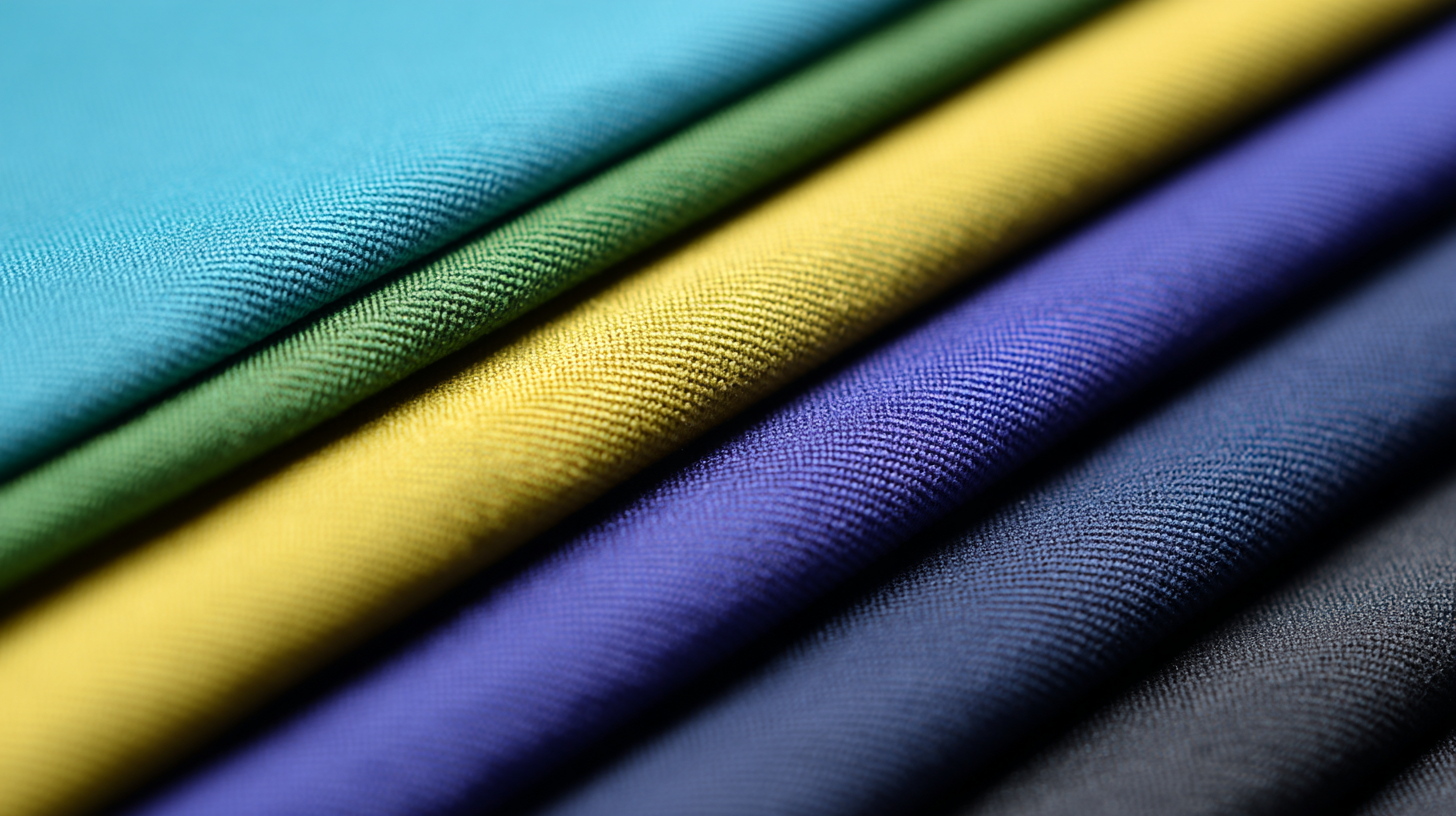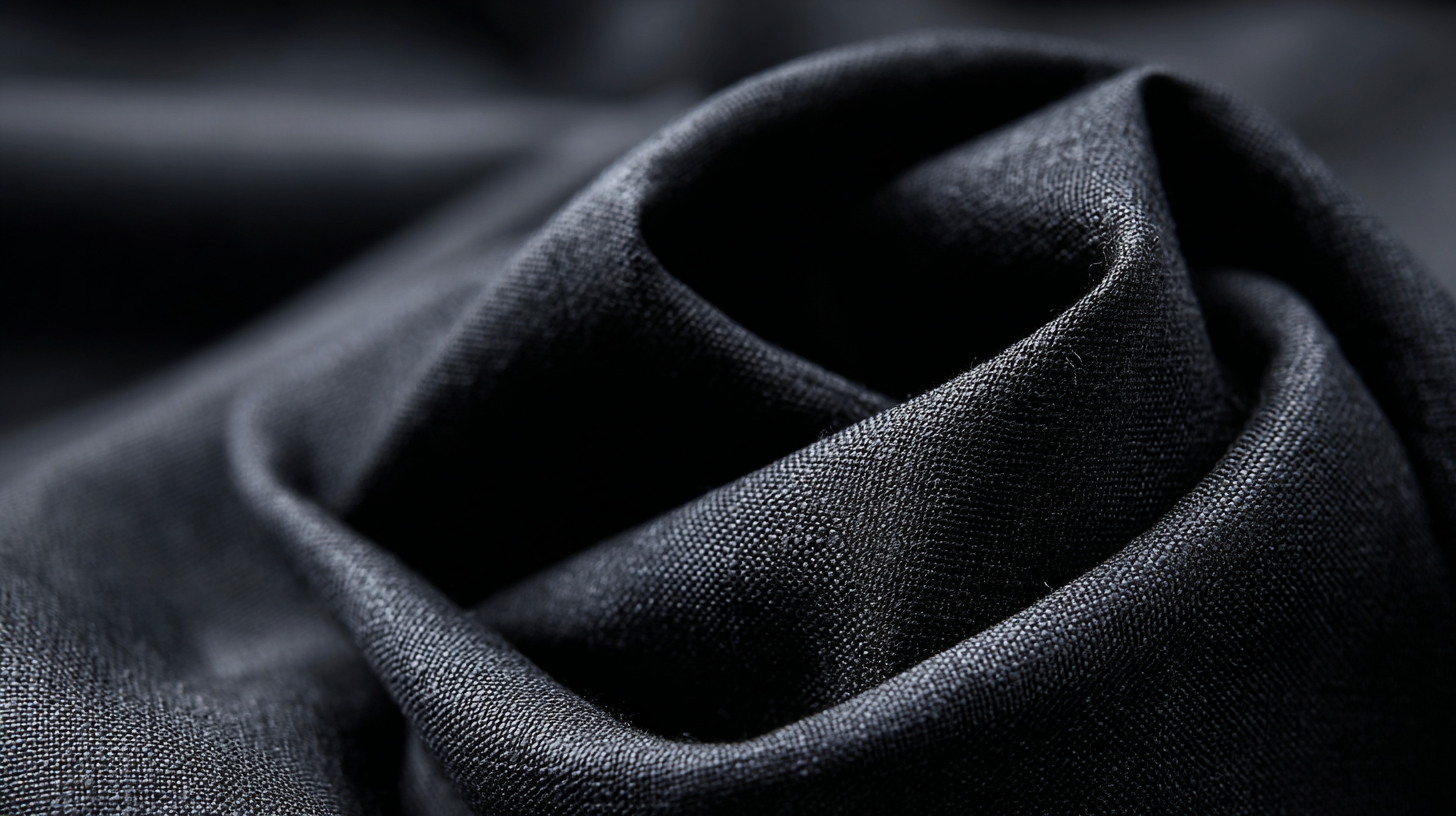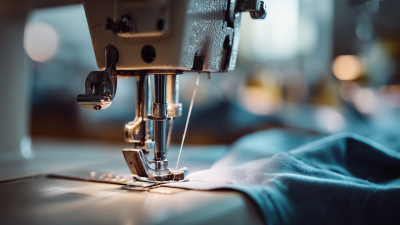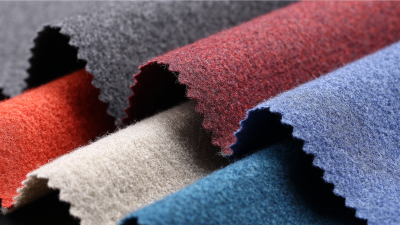- +86 13957580925
- 510515850@qq.com
- adela0928@163.com
The fashion industry has increasingly recognized the significance of fabric choice in creating garments that offer both durability and comfort. One such material that has caught the attention of designers and manufacturers alike is Pongee Lining Fabric. This lightweight yet robust fabric, originally derived from silk, has evolved into a popular choice for high-quality linings due to its exceptional resilience and smooth texture. According to a recent industry report by Technavio, the global textile market is projected to grow by $120 billion from 2021 to 2025, highlighting the increasing demand for innovative materials like Pongee. Its unique properties not only enhance the wearability of garments but also improve their overall lifespan, making Pongee an ideal candidate for fashion items that require both style and durability. As consumer preferences shift towards more sustainable and long-lasting clothing options, the adoption of Pongee Lining Fabric is poised to elevate the standards within the fashion landscape.

Pongee lining fabric is increasingly recognized in the fashion industry for its exceptional composition and characteristics that contribute to enhanced durability and comfort. Made from fine polyester fibers, pongee fabric showcases a unique structure that not only provides a luxurious feel but also ensures longevity, making it an ideal choice for high-quality garments. The tightly woven fibers create a smooth surface that resists wrinkles and wear, an essential feature for clothing designed for daily use.
Incorporating pongee lining into fashion items not only elevates their aesthetic appeal but also enhances their functional performance. Its lightweight nature coupled with breathability ensures that wearers remain comfortable, even in varying conditions. Furthermore, the fabric’s resilience to moisture allows it to maintain its integrity over time, setting it apart from lesser-quality materials. This combination of factors makes pongee lining a valuable asset in creating fashionable yet durable clothing, emphasizing the ongoing shift in the industry towards sustainable and long-lasting textile solutions.
| Characteristic | Details |
|---|---|
| Composition | Polyester, Nylon blends |
| Weight | Lightweight, typically between 50-100 g/m² |
| Durability | High resistance to tearing and abrasion |
| Comfort | Soft hand feel, breathable |
| Water Resistance | Moderate, often treated for improved water repellency |
| Uses | Lining for jackets, bags, and accessories |
| Care Instructions | Machine wash cold, tumble dry low |
 Pongee lining fabric has gained recognition in the fashion industry for its unique properties that significantly enhance garment durability. This lightweight, tightly woven fabric not only provides a smooth finish but also acts as a protective barrier against wear and tear. By incorporating pongee lining into garments, designers can extend the lifespan of their creations, ensuring that the fabrics remain intact and visually appealing even after multiple washes and extensive use.
Pongee lining fabric has gained recognition in the fashion industry for its unique properties that significantly enhance garment durability. This lightweight, tightly woven fabric not only provides a smooth finish but also acts as a protective barrier against wear and tear. By incorporating pongee lining into garments, designers can extend the lifespan of their creations, ensuring that the fabrics remain intact and visually appealing even after multiple washes and extensive use.
Additionally, pongee lining contributes to the overall comfort of clothing. Its soft texture against the skin reduces friction, making it ideal for linings in jackets, coats, and trousers. This level of comfort is crucial for consumers who prioritize both style and wearability. Moreover, the breathable nature of pongee allows for better moisture management, preventing the accumulation of sweat and promoting a cooler wearing experience. Thus, the integration of pongee lining in fashion not only supports the durability of garments but also enhances the comfort level, catering to the demands of modern consumers.
 Pongee lining fabric is gaining recognition in the world of fashion, not just for its durability but also for its unique comfort benefits. This lightweight fabric, often made from polyester, creates a soft touch against the skin, providing a luxurious feel that elevates any garment. Its smooth surface reduces friction, making it easier for clothing to glide over layers, which enhances the overall wearing experience. The breathable nature of pongee also contributes to comfort, allowing for better air circulation, making it an ideal choice for both casual and formal wear.
Pongee lining fabric is gaining recognition in the world of fashion, not just for its durability but also for its unique comfort benefits. This lightweight fabric, often made from polyester, creates a soft touch against the skin, providing a luxurious feel that elevates any garment. Its smooth surface reduces friction, making it easier for clothing to glide over layers, which enhances the overall wearing experience. The breathable nature of pongee also contributes to comfort, allowing for better air circulation, making it an ideal choice for both casual and formal wear.
In addition to its tactile advantages, pongee lining adds a layer of sophistication to clothing. Designers favor this fabric for its ability to hold vibrant colors and intricate patterns, enhancing the aesthetic appeal of garments. When used in jackets and outerwear, pongee lining not only provides comfort but also contributes to a polished and refined look. The blend of style and comfort makes pongee not just a functional choice but a statement in luxury fashion, appealing to consumers who value both elegance and ease.
Sustainability is becoming an essential consideration in modern fashion design, and pongee lining fabric is leading the way with its eco-friendly attributes. Made from silk or synthetic fibers, pongee is celebrated not only for its lightweight and breathable characteristics but also for its environmental benefits. The production processes have evolved to reduce waste and energy consumption, making pongee a responsible choice for sustainable fashion brands. By opting for this fabric, designers can create stylish garments without compromising their commitment to the planet.
Moreover, pongee lining contributes to the longevity of garments, which aligns with the growing trend of slow fashion. When clothing items are designed to last, they result in less frequent need for replacements, thereby minimizing textile waste. The durability of pongee ensures that garments maintain their integrity over time, offering consumers a sustainable option that stands against the fast-fashion cycle. As fashion continues to evolve, embracing materials like pongee not only enhances comfort and durability but also promotes a more sustainable approach to clothing production and consumption.
When comparing Pongee lining fabric to traditional lining materials such as polyester and silk, several advantages become apparent. Pongee, a lightweight and tightly woven fabric, boasts exceptional durability that rivals traditional options. Reports indicate that garments lined with Pongee tend to exhibit 15-20% better wear resistance compared to standard polyester linings, making it a popular choice for high-end fashion lines focusing on longevity. Additionally, Pongee's smooth texture enhances the overall aesthetic appeal while providing a luxurious feel against the skin, often preferred by designers looking to elevate their clothing quality.
**Tips**: When designing garments, consider integrating Pongee lining to boost both comfort and durability. Its moisture-wicking properties can also help regulate temperature, making it a smart choice for year-round wear. Opt for Pongee in garments that require regular movement, such as outerwear and suits, to ensure both style and practicality.
Moreover, while traditional linings can be prone to fading and pilling, Pongee's dye retention capabilities often outshine these fabrics. Industry statistics show that Pongee maintains its color vibrancy for up to 30% longer than standard silk linings, making it an excellent option for fashion items that demand high impact. This attribute not only preserves the garment's visual appeal but also reinforces the investment for consumers seeking fashion that lasts.






